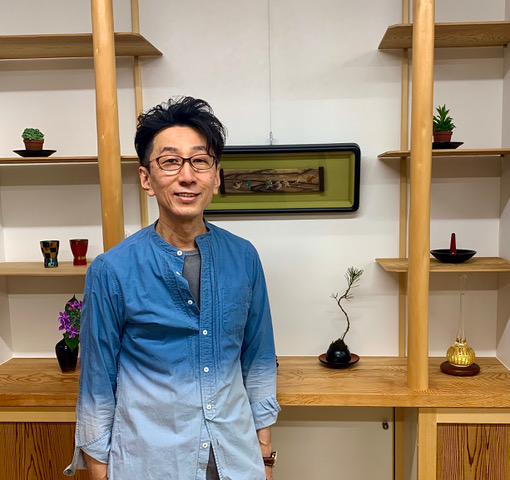MONTHLY LETTER
| 01 | 02 | 03 | 04 | 05 | 06 | 07 | 08 | 09 | 10 |
02
The TM JAPAN ART STUDIO:
In His Own Words...
Mastery of the skills needed to create is the prerequisite for an artist. But once the skills are evident, to the artist and those experiencing the art, the artist’s personality must emerge. Otherwise, the art has a sameness and a manufactured quality. The artist’s identity, who they are as a person, is part of what makes makes the best art an essential way of seeing the world.Takeshi Matsuyama takes his awareness of art’s demands and applies it to his work.
When asked about his purpose and outlook, he responded by saying that he begins by understanding that he wants to achieve certain specific goals. These goals are informed by this framework:

“To get in touch with traditional Japanese culture. By visiting my studio, guests can appreciate more deeply the value of what’s being done through observing the physical process of what I make, and, through the observation, and my explanation of what they are seeing, guests experience a part of the process.”
What notes that his goals have been the same for a long period of time, and strengthened further since the pandemic.
Building on these goals and principles, he explained his work in greater depth.
Answer: In my case, I use the design, not just Japanese designs, but also new and international designs, and then apply Japanese techniques. These techniques are meant to create a sensory experience using all our senses.
A: I’m always looking at traditional Japanese designs and new fashions for inspiration. International art. Paintings. And for inspiration from nature. Sometimes the colors alone provide inspiration.
A: Yes! Spring, summer, fall, winter--the colors, for example. White in winter, and the varying colors of flowers and plants.
A: When I create my work, I always have Shinto spirituality in mind. Nature has all the meaning. So my mind is focused on nature, its purpose; and, Shinto spirituality has a certainty.
A: It depends on one’s preference, of course, but speaking as the artist, I want the owner of my work to enjoy the art and spirituality as much as possible. So: some place visible is ideal for my work! I still recall a person from Brazil who loved a natsume box that he purchased; he said that he would place it in the center of his home in order to enjoy it each day. That motivated me enormously.
A: As time goes by, I just want to keep improving myself. If I’m not 100% satisfied, I have to keep doing it again and again and again--to try to make it as perfect as possible. Not just in terms of technique, but also in spiritual matters as well. Through my work, I’m trying to create something beautiful; it’s a way to expand all five senses. And the work keeps evolving!